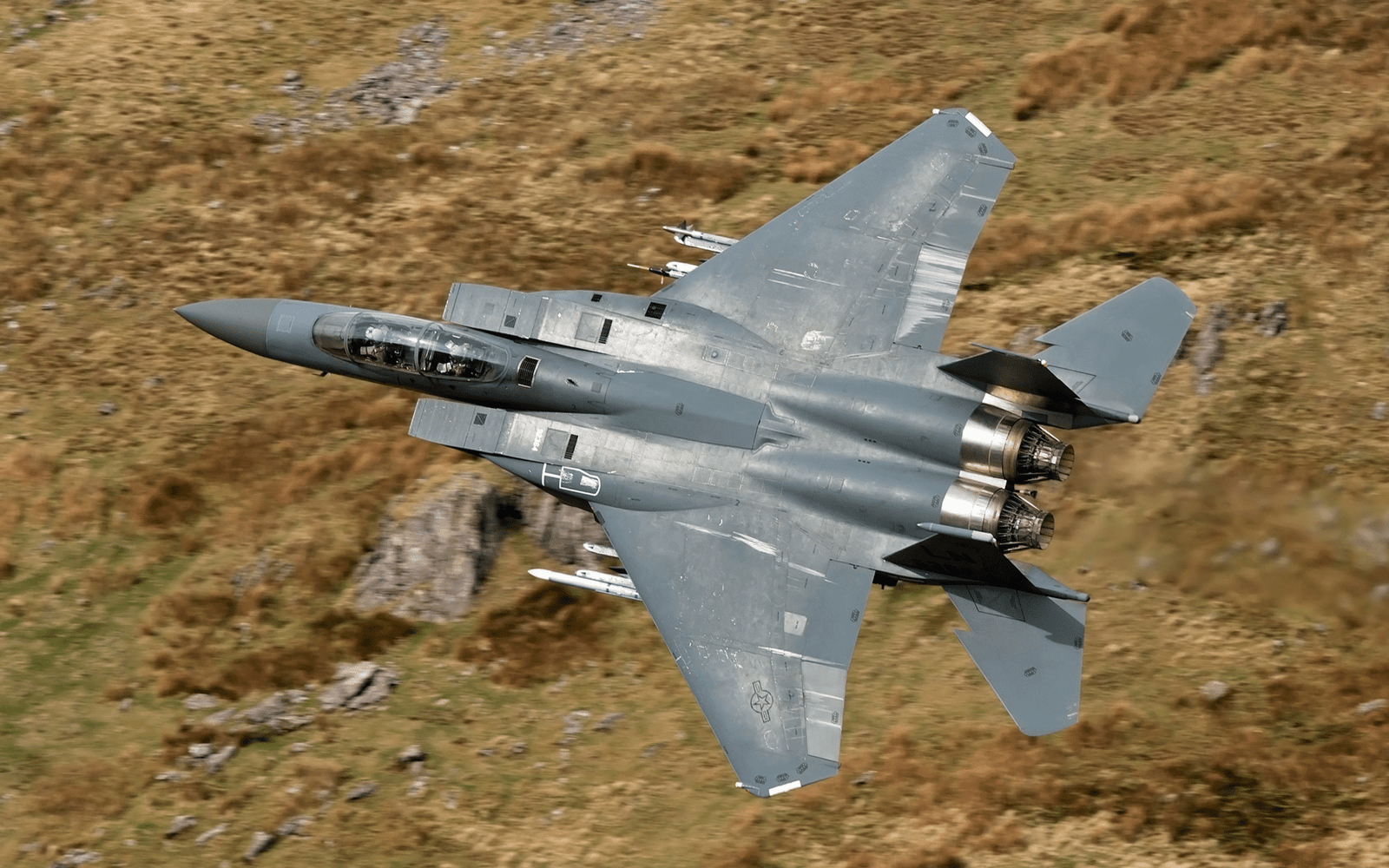
“Mach 2.5 is not near Mach 3—but it’s still quick,” said Robert Novotny, a retired USAF F-15 pilot. Within the world of U.S. Air Force manned air fighters, that number doesn’t belong to the stealth-capable F-22 Raptor or F-35 Lightning II, but to the F-15E Strike Eagle—a fighter whose design ethos values brute speed, payload, and operational versatility over stealth.

The F-15E has a maximum speed of Mach 2.4–2.5, or approximately 1,875 mph, delivered by dual Pratt & Whitney F100-PW-229 afterburning turbofan engines. Each provides 17,800 pounds of thrust at military power and 29,100 pounds with afterburning, combined for a total of 58,000 pounds. Advanced digital control enables pilots to change from idle to full afterburner in less than four seconds—a key benefit in fighting maneuvers. This propulsion system, in conjunction with low wing loading, makes high-G turns possible without terminal speed loss, something stealth-optimized airframes typically give up.

In contrast to fifth-generation designs, the Strike Eagle’s fuselage and wing configuration are unconstrained in their shaping by internal weapons bays and radar-deflecting angles. This permits a cleaner aerodynamic shape with less form drag at high speed. While stealth fighters such as the F-22 use thrust-vectoring nozzles and blended wing-body configurations, their intake geometry and exhaust shaping place a maximum-velocity limit on these airframes. The greater wing loading of the F-15E relative to delta-wing aircraft encourages stability at high speeds, albeit with the trade-off of slightly lower low-speed maneuverability.

Originally based on the air-superiority F-15 Eagle, which has a 104–0 air victory record, the Strike Eagle incorporated strengthened airframes for 16,000 flight hours and increased payload capacity. It can carry 24,500 pounds of ordnance, from AIM-9 Sidewinders to precision-guided bombs and the B61-12 nuclear weapon. Its 60,000-foot service ceiling and 790-mile combat radius enable deep interdiction missions without tanker support. This long-endurance came to be crucial in operations from Operation Desert Storm—where Strike Eagles shot down 18 Iraqi aircraft on the ground—to Afghanistan, Iraq, and Syria.

The defining characteristic is the two-man crew: a pilot and a Weapons Systems Officer (WSO). In operations like the 1991 Valentine’s Day rescue of U.S. Special Forces, this division of labor permitted Capt. Tim Bennett to concentrate on low-altitude ingress at 600 knots while Capt. Dan Bakke held laser lock on a moving Mi-24 Hind helicopter—eventually destroyed with a 2,000-pound GBU-10 bomb. Sensor management, target acquisition, and electronic warfare by the WSO significantly increase situational awareness in multi-threat environments.

Strike Eagles are designed to ride 9 G forces in hot turns. Combat over heavily defended areas of Iraq exposed crews to high-density AAA and repeated SAM launches, situations where speed and rate of climb were lifesavers. The aircraft’s capacity for self-escort—equipped with both air-to-ground and air-to-air ordinance—minimizes reliance on specialist fighter cover, a capability still uncommon for heavy strike aircraft.

The F-15EX Eagle II updates the platform with the Advanced Display Core Processor II, which performs 87 billion computations per second. This allows sensor fusion and battle management on the level of fifth-generation capabilities. The EX version will also deploy hypersonic weapons—air-launched missiles that break Mach 5—providing standoff strike ranges that reduce enemy reaction time to seconds. Improved avionics, AESA radar, and electronic warfare systems further enhance its survivability against emerging air defenses.

While stealth planes excel at detection avoidance, speed is still paramount to interception and evasion. When enemy radar coverage is disrupted—through electronic attack or terrain masking—having the capability to close distance at Mach 2.5 can be determinative. The Strike Eagle’s velocity, payload, and processing capabilities make it an adjunct asset to stealth fighters, with the ability to take advantage of gaps in enemy defenses created by F-35 penetrations.

The F-35’s sole Pratt & Whitney F135 engine delivers 43,000 pounds of thrust, restricting top speed to Mach 1.6. The F-22’s dual F119 engines deliver 70,000 pounds total, but stealth shaping truncates velocity at Mach 2.25. The F-15E, meanwhile, has propulsion and aerodynamics maximized for maximum acceleration and extended supersonic cruise at altitude. It is the fastest manned fighter in the U.S. inventory, though a fourth-generation design.

The Strike Eagle’s continued relevance is its potential to combine traditional speed and payload benefits with contemporary sensors and weapons. As the F-15EX becomes operational, the platform’s contribution to high-intensity conflict will increasingly rest on combining hypersonic strike capability with brute-force capability that has characterized its heritage.
